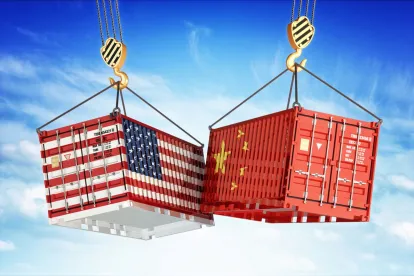Amid the heated trade tension between China and the United States, it is a good time to remind ourselves that, while the Chinese Government is raising tariffs on various foods, such as wine, nuts, soybeans, meat, and tobacco, one also should be mindful of China's non-tariff regulatory requirements. The economic impact from higher tariffs often can be outweighed by the inability to get a product past the port of entry if the product is deemed non-compliant under China's food laws and regulations. The impact can go beyond the existing shipment, resulting in delays and additional requirements even on subsequent shipments. In fact, depending on the violation, the authority may add companies to import databases that will put them under stricter regulatory scrutiny.
For example, in July, China's General Administration of Customs (GAC) released the latest Notification of Safety Risk Warning for Imported Food, the so-called "blacklist" of overseas food manufacturers[1], exporters[2], and local food importers[3]. This risk warning notification was issued following the former Administration of Quality Supervision, Inspection and Quarantine's (AQSIQ's) Detailed Implementing Rules for Administration of bad record of Imported Foods (Decree No. 43/2014)[4].
Under the former AQSIQ's Decree No. 43/2014, if a food producer or operator is blacklisted due to importing non-compliant food products, China's GAC can implement, for a certain period of time (usually 6 or 12 months), additional safety control measures such as requiring importers to submit additional documents to the authority.
In the latest GAC notification, 58 food companies from Europe were included on the blacklist and are subject to various control measures against future exports to China, such as submitting additional testing data, forcing their local importer to meet with the responsible Chinese port customs, and requiring letters of guarantee on their packaging or labeling. Such control measures typically are applied to each batch of the specified food products sold in China.
Assuming no new safety or quality problems are reported upon expiration of the additional control measures, the blacklisted producer/exporter can apply for removing those measures to the responsible agency at its home country (region). Upon verification of the producer's/exporter's application, the foreign agency may request GAC to lift the restrictive measure; the GAC will then make its decision based on whether a food safety risk persists.
In addition to measures like the blacklist, China has recently considered a more long-term plan that focuses on having batch-by-batch certification issued by competent authorities in the exporting country to ensure that food exported to China is safe and of suitable quality. The intent is to establish a link between competent authorities of the exporting country/region and China. More specifically, in the summer of 2017, China notified the World Trade Organization (WTO)[5] of its draft Measures for the Administration of Certificates Attached to Foods Exported to China (Draft) (Measures)[6] and proposed to enforce the Measures from October 1st, 2017. However, on September 25th, 2017, China filed an addendum to the WTO in which it proposed a transition period of two years for implementing the certification requirement, extending the deadline to enforce certificates to September 30th, 2019.
Pursuant to the draft Measures, the food importer shall attach a certificate, issued by the competent authority of the exporting country/region or its authorized or designated institution, to every batch of food to prove that each batch is under the supervision of the competent authority of the exporting country and is eligible for human consumption. Failure to submit such a certificate will result in the rejection of the imported food at the port of entry.
Food safety risk has been one of the key factors that China considers when it develops its food management system and designs food-related policies. For example, certain food categories with comparatively high safety risk, such as meat and dairy products, are already subject to certification requirements if they are exported to China. Unlike these already adopted food regulations, which classify foods based on their associated safety risk, the proposed certification program applies to every food product that is imported in China without distinction[7]. This proposed mechanism has been criticized as lacking scientific justification and may likely result in undue hardship on the food industry. Furthermore, in practice, it is uncommon for a national or local agency to vouch for the safety of specific batches of food exported to destination countries. The impracticality of this has led several state governments to urge China to reconsider the program and exclude some low-risk products (e.g., wine, spirits, biscuits and confections, etc.) from the certification scope under the Measures.
Although due to the ongoing government restructuring, the enforcement of this certification program might be further delayed[8], as the 2019 deadline is approaching, some countries are negotiating with China to identify an acceptable certificate template in order to export from their country. In fact, templates have already been adopted in the certification of the aforementioned high-risk food products based on agreements between the exporting country and China and may be referenced in the future development of the general food certificate. For example, dairy products exported to China from France must be accompanied with a sanitary certificate issued by the French Ministry for Agriculture and Food (MAF). The content and format of this certificate has been reviewed and approved by the MAF and the former AQSIQ.
Given the above, it is important for individual food producers, trade associations, etc., to keep working with their national or local governments to understand, monitor, and prepare for the September 30th, 2019 implementation date. Perhaps future negotiations will result in a more practical application of the certification program so China can continue to ensure the safety of imported foods, while putting in place requirements that are more feasible for industry to meet.
Depending on how this new certification program is finally implemented, in practice, it will likely create new challenges to the food industry and foreign governments. One cannot ignore the possibility that, by failing to comply with the certification program, a company could find its way onto the blacklist. Thus, while the focus in the media over the past few months has been on tariffs, companies should remain mindful of non-tariff requirements that often have a greater impact on a company's brand and its ability to export to China.
[1] Warning Notice on safety Risk of Imported food and cosmetics (Overseas Producer Companies)
[2] Warning Notice on safety Risk of Imported food and cosmetics (Overseas Exporter Companies)
[3] Warning Notice on safety Risk of Imported food and cosmetics (Importers)
[5] See Notification G/TBT/N/CHN/1209
[6] Measures for the Administration of Certificates Attached to Foods Exported to China (Draft)
[7] Under Article 12 of the draft Measures, food imported as samples, gifts, food for display, food in small amount related to trade with Taiwan or border trade, food for foreign consulates use or duty-free operation are exempted subject to special rules.
[8] For more information about the Chinese Government's reshuffle plan, please visit our website.





 />i
/>i
